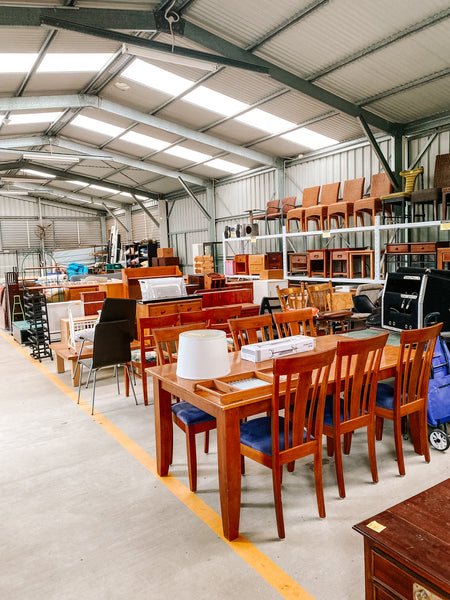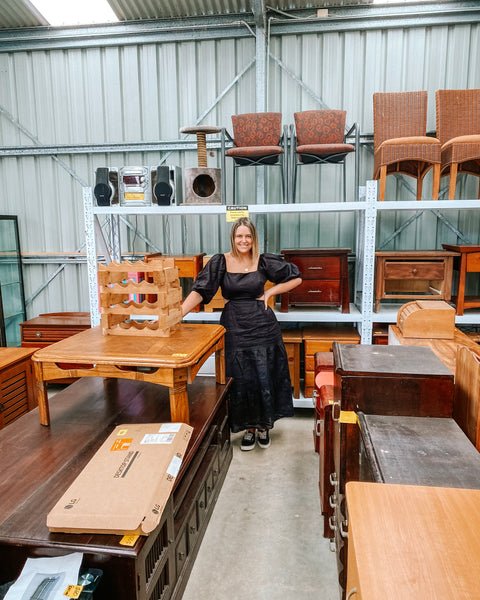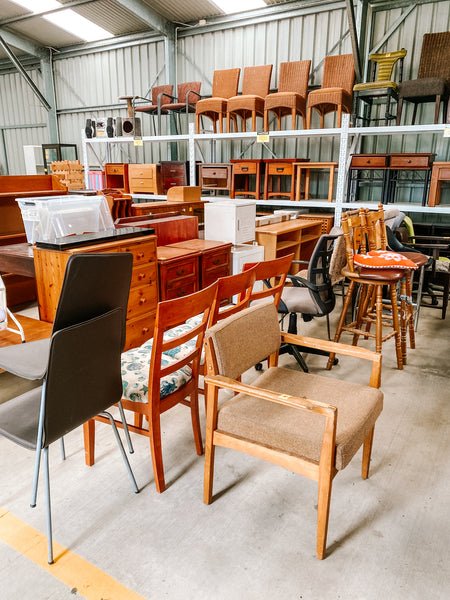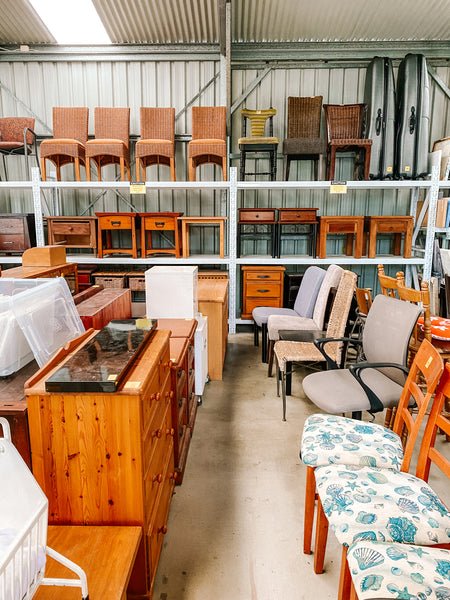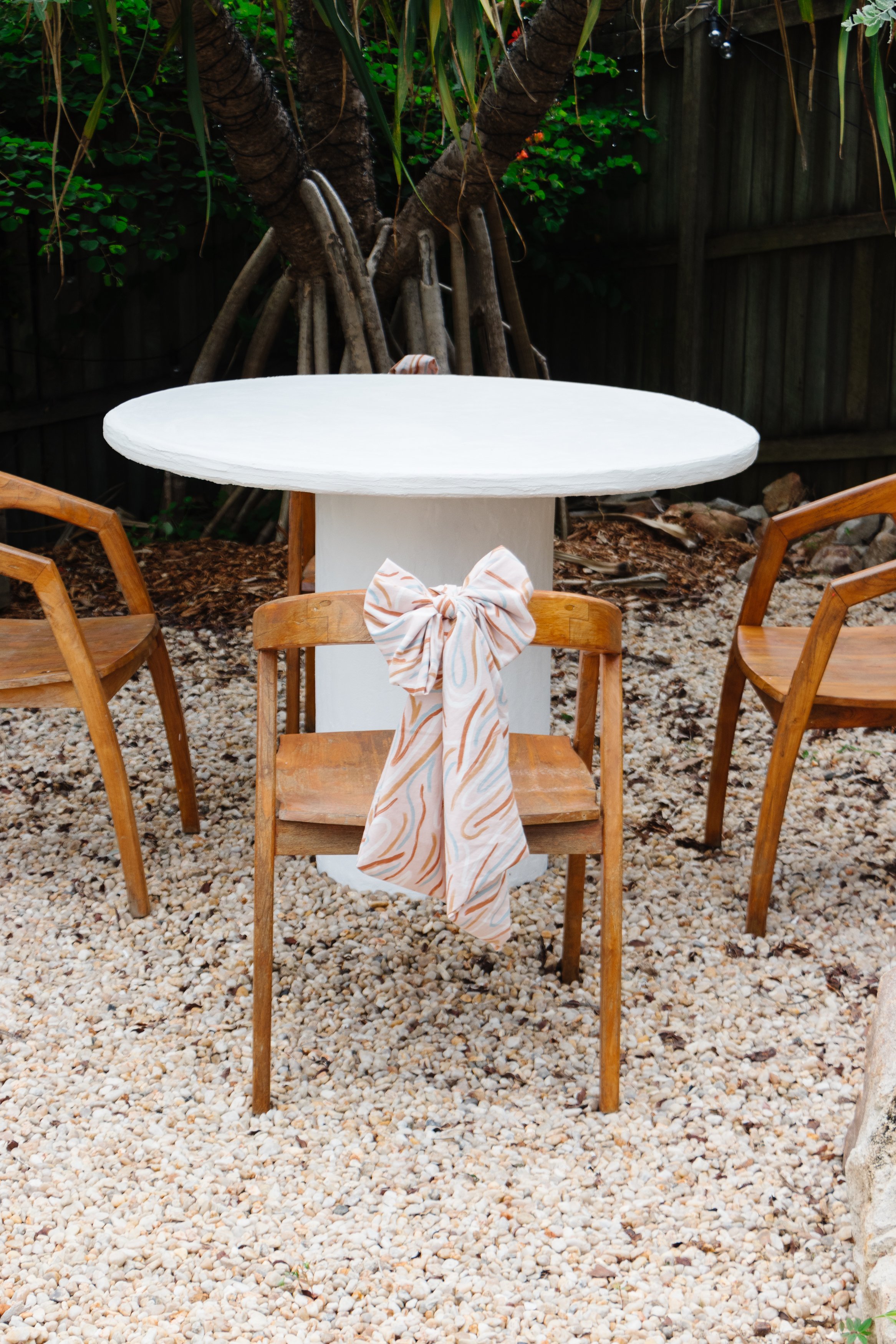A Guide To Choosing Secondhand Furniture To Upcycle
I absolutely LOVE upcycling secondhand furniture. To me, there is no greater joy or satisfaction than picking up a dusty old coffee table for next to nothing and completely transforming it with a bit of elbow grease and creativity. Have you seen my DIY Terrazzo Table yet? The thing is, being able to upcycle secondhand furniture starts with an understanding of what has potential and what is just plain fugly. The last thing I want you to do is walk past an armchair that is actually a mid century modern design with infinite possibilities, or pick up a table that is the wrong size and is hiding a serious mould problem. With this in mind, I thought I would share my tips for choosing secondhand furniture to upcycle. With these tips by your side, you'll know what to grab (and quickly at that) and what to leave without feeling any buyer's remorse.
1. Know where to look
It's important to know where to actually find great secondhand furniture. There are 4 places I always find great pieces:
The Local Tip Shop: If you have been following along on Instagram, then you'll know I am very lucky to have an excellent tip shop down the road from me, which is adjacent to the Noosa Tip. Check with your local council and ask them if there are any close to you. They may have a retail space next door where they salvage and sell items that would have ended up in the tip for dirt cheap.
Facebook Marketplace: I've had great success looking on Marketplace but you have to be quick. You also need to know your measurements and don't be shy to offer below the asking price when paying cash. If you see something you like but you're not 100% sure, ask for more photos and more measurements.
Charity Shops: Lifeline and Vinnies have some really big warehouses filled with great secondhand furniture. Jump on their websites to find out which of their shops sell furniture (not all of them do) and spend a Saturday driving from one to the other. It's a lot of fun!
Council Kerbside Pickups: This is when your local council picks up larger pieces of trash from the kerb outside your home on a designated day. Unfortunately this hasn't happened since the start of the pandemic here where I live, but it's an excellent opportunity to find treasure amongst all the trash. My tips? Go early, go often and make sure you have an empty boot or a trailer where you can throw everything into. You never know what you'll find.
2. Go often
Finding really great pieces of secondhand furniture is about looking often. I visit my local tip shop at least once a week (sometimes more) and I drop into my local charity stores at least every fortnight. The turnover at my tip shop is fast so it pays to go often. If you can, don't wait for the weekend to go secondhand shopping. If you can't go secondhand shopping often, block out a day where you can go during the week or on the weekend and visit lots of tips shops and charity stores in one hit. If you can't get to your local shops at the moment due to lockdown (I feel for you!) Facebook Marketplace is an excellent online resource you can search anytime of the day or night from the comfort of your couch.
3. Have a plan, but also don't have a plan
I know this may be confusing, but often the best pieces I've found happen when I don't have anything in mind, but also when I do. I like to keep a list of projects written down and I refer back to it whenever I’m going secondhand furniture shopping. It helps me stay on track, but I don't live or die by it. Often I am inspired by what I see rather than what's on my list.
4. Know your style
Without a doubt, I am always on the lookout for mid century modern designs. It's my favourite design era and it's a style both Jason and I love. I also love looking for pieces of furniture that are a little bit retro, industrial and cottagecore. On the flip side I avoid modern outdated designs from the 80s and 90s, as well as designs from the 60s and 70s that are boho and hippy.
5. Check to see if it has great bones
When I see a piece of furniture I like, the first thing I do is check that it has great bones. The things I look out for are:
The shape and whether or not the design is inspired by a design era I love.
Timber stain can hide really beautiful timber so don’t reject something without considering sanding it back; it could be hiding beautiful Tasmanian Oak!
If it's made from solid timber and not a composite timber, which rots over time.
If it has strong or wobbly legs. Wobbly legs isn't a bad sign, but I like to see if it's an easy fix with screws and a drill.
If there is any metal on the piece of furniture. We live by the beach and anything that has a lot of metal on it (like chairs with metal legs) means it'll attract rust, so that's something I like to avoid.
Mould and any other nasties, like stains and water damage.
Scratches. If it's a piece of timber furniture, sanding is a great solution but if it's plastic or glass, I tend to avoid these pieces.
I also literally flip furniture upside down and check everywhere I can, just in case. You never know what you’ll find so really take a good look at it.
6. Look past the obvious
There are so many beautiful pieces of furniture that get overlooked because it might have gross, dirty fabric. Look past the obvious and focus instead on the design and bones of the piece. You can easily replace fabric and cushion seating. You can easily sand timber and re-stain or paint it. You can easily replace rusted door knobs and handles with new ones. There are so many possibilities so always try to look past the obvious.
7. Actually test the furniture
Don't just look at a table, an armchair or a dining chair without actually testing it. Sit at the table, curl up in the armchair and sit on the chair. See if it's sturdy, cosy, comfortable and the right height. The last thing you want is to bring home a desk and it collapses.
8. Create an upcycling toolkit
I never go secondhand shopping without a measuring tape, a pen and notebook, and baby wipes. Because we built our home, I am very familiar with the measurements of each room so if I see something I like, I am able to measure that piece of furniture and know pretty quickly if it'll suit our home. One of you on Instagram suggested taking photos of your house plans with your phone, so you’ve always got them on you - genius! I also carry a pen and notebook everywhere with me, and use this to pencil out drawings, designs and ideas when I am out sourcing. I also take baby wipes with me. Sometimes I see a piece of furniture I love but it's covered in an inch of dust. By wiping it clean, I am able to see the quality of that piece and if it has any stains or mould on it.
9. Know your tools
I’m very good friends with my drill, and last year I invested in an electric sander. I picked it up from Bunnings for $30 and it changed everything for me. It's very easy to use and it opened up a world of possibilities. Which means when I am choosing secondhand furniture to upcycle, there is so much more I can do to elevate that piece and breathe new life into it. Since then, I have also bought a jigsaw (also from Bunnings for only $30). This power tool is EXCELLENT. It cuts timber and MDF, and that means I look at furniture very differently now. You do need to make sure you have the right blades, but that’s as easy as talking to someone at Bunnings and letting them know what you want to cut. I’ve also been using joint compound, expanding foam, cardboard and paint stripper to upcycle furniture. These simple to use tools are perfect for upcycling furniture and they really do change the game - you’ll never look at a piece of secondhand furniture the same ever again. I promise!
10. Things to avoid
There are a few things I avoid when sourcing secondhand furniture and here's what they are:
Mattresses, yuck.
Anything that smells.
Furniture that has mould or water damage.
Timber that has irreparable damage.
Rust, where possible. Rust can be removed using a rotary tool or CLR (if you’re careful), but it's important to be totally sure before you buy. If you're not sure, and let's say it's a door handle, look past the rust and think about replacing the handle entirely with a new one.

